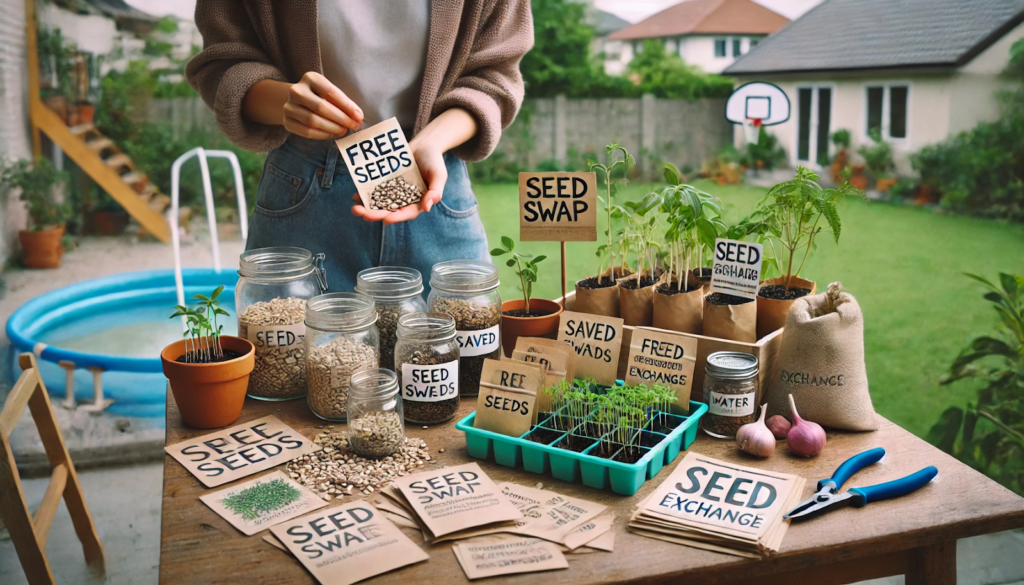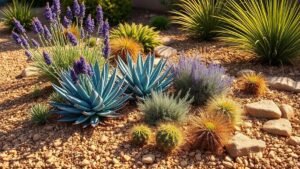Starting or expanding a garden doesn’t have to be expensive—especially when it comes to seeds and plants. With a little resourcefulness and community engagement, you can grow a thriving garden without spending a dime on seeds or seedlings.
In this guide, you’ll learn where and how to find free seeds, plants, and cuttings for your garden, along with tips to ensure they grow successfully.
Why Grow with Free Seeds and Plants?
- Budget-friendly: Save money on store-bought packets or nursery starts.
- Sustainable: Reduces packaging and transportation impact.
- Diverse: Often exposes you to unique or heirloom varieties.
- Community-building: Encourages sharing and connection among gardeners.
1. Save Seeds from Your Own Produce
Saving seeds is the most direct way to build your own free seed bank.
What You Can Save:
- Tomatoes, peppers, and cucumbers (ferment and dry seeds)
- Lettuce, spinach, and beans (let them bolt and dry on the plant)
- Herbs like basil and cilantro (harvest seed heads)
How:
- Remove seeds from ripe fruit
- Clean and dry completely
- Store in labeled envelopes or jars in a cool, dry place
Tip: Only save seeds from open-pollinated or heirloom plants—hybrids won’t grow true to type.
2. Participate in Local Seed Swaps
Seed swaps are events (in-person or online) where gardeners exchange seeds they’ve saved or collected.
Where to Find Them:
- Local gardening clubs or community centers
- Libraries and botanical gardens
- Facebook groups or Nextdoor communities
- Online platforms like Reddit’s r/seedswap
Tip: Bring something to trade—even if it’s just envelopes or plant labels. Some swaps don’t require direct exchanges.
3. Check Public Seed Libraries
Many public libraries now offer seed lending programs, especially in urban areas.
How It Works:
- “Borrow” seeds for free
- Grow the plants
- If possible, return seeds at the end of the season
Bonus: Some libraries also host free gardening workshops or provide starter kits.
4. Ask Friends, Family, and Neighbors
Many gardeners grow more than they can use and are happy to share.
Ask for:
- Extra seedlings after thinning
- Cuttings from herbs or perennials
- Unused seed packets
Start conversations, or post politely on local social media groups—you’ll often get enthusiastic responses.
5. Join Community Gardens
Community gardens often have shared resources like tools, compost, and yes—seeds and starter plants.
Benefits:
- Learn from experienced gardeners
- Access shared plantings
- Receive extras or divided perennials
Tip: Volunteer your time—most communities are happy to share in exchange for help.
6. Browse Freecycling Platforms
Websites and apps for local exchanges often include listings for gardening supplies.
Where to Look:
- Freecycle.org
- Buy Nothing Project (Facebook)
- Craigslist (Free section)
- Nextdoor and OfferUp
Search for keywords like “plants,” “garden,” “cuttings,” or “seeds.”
7. Collect Wild Seeds Responsibly
With care and permission, you can collect seeds from wildflowers or native plants.
Guidelines:
- Only take small amounts to preserve natural populations
- Avoid endangered or protected species
- Collect when seeds are fully mature and dry
- Always follow local laws
Tip: Native plants are especially valuable for local ecosystems and pollinators.
8. Start Plants from Cuttings
Many plants can be propagated easily from cuttings rather than seeds.
Easy-to-Propagate Plants:
- Basil, mint, rosemary, and thyme
- Succulents
- Spider plants and pothos
- Tomatoes and peppers (from suckers)
Place cuttings in water or soil depending on the plant. Roots usually form within 1–3 weeks.
9. Visit Plant Sales and Ask for Leftovers
Nurseries and garden centers sometimes dispose of unsold or overstocked plants.
How to Ask:
- Be polite and honest: “Do you have any plants past sale that I could rescue?”
- Offer to take damaged or struggling plants (many can recover!)
Tip: Timing matters—end of season or after major holidays is best.
10. Join Online Gardening Communities
Online groups offer tons of opportunities to trade, request, or win free seeds.
Where to Start:
- Reddit: r/Seeding or r/Gardening
- Facebook: Search “free seeds” + your location
- Instagram giveaways: Many gardeners share seed bundles
- Seed Savers Exchange: Trade heirloom varieties
Tips for Storing and Tracking Free Seeds
- Use paper envelopes or glass jars with silica packs
- Label clearly with plant type and date
- Store in a cool, dry place
- Keep a seed journal or spreadsheet to track varieties and results
Grow Abundantly, Spend Nothing
With just a little networking and a few smart strategies, you can fill your garden with vibrant, productive plants—all without spending money. Whether you’re swapping seeds, collecting cuttings, or saving your own, you’ll be building a resilient, sustainable garden system that grows bigger every season.






